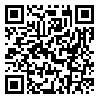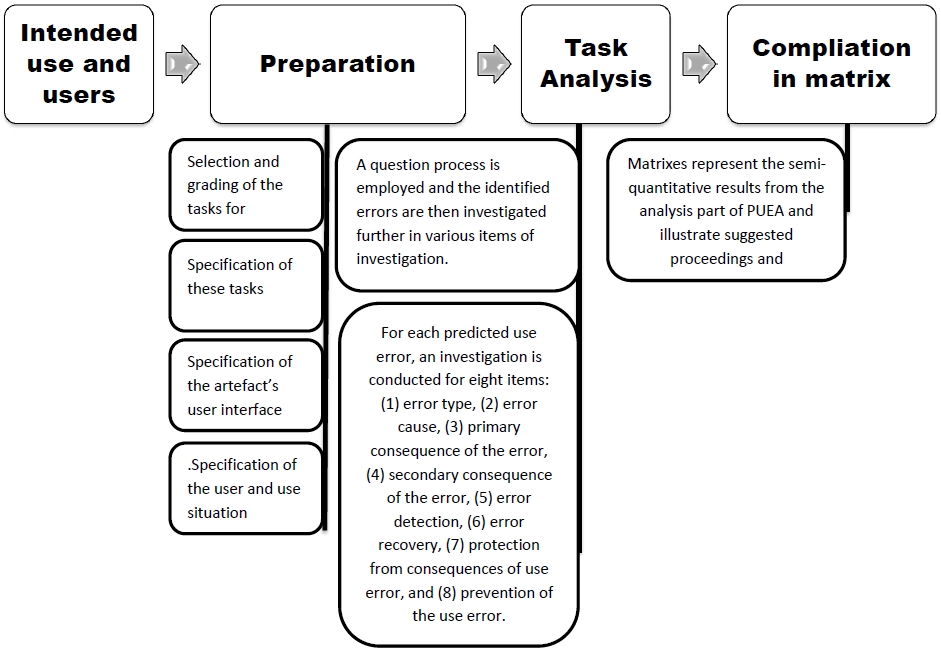Volume 9, Issue 3 (9-2019)
J Health Saf Work 2019, 9(3): 212-220 |
Back to browse issues page
Download citation:
BibTeX | RIS | EndNote | Medlars | ProCite | Reference Manager | RefWorks
Send citation to:



BibTeX | RIS | EndNote | Medlars | ProCite | Reference Manager | RefWorks
Send citation to:
Salari S, Farokhzad M, Khalili A, Mohammadfam I. Identification of Human Errors in the Use of Neonatal Ventilator Device by Predictive Use Error Analysis method. J Health Saf Work 2019; 9 (3) :212-220
URL: http://jhsw.tums.ac.ir/article-1-6167-en.html
URL: http://jhsw.tums.ac.ir/article-1-6167-en.html
1- Department of Occupational Health and Safety Engineering, School of Public Health, Hamadan University of Medical Sciences, Hamadan, Iran
2- Department of Pediatric Nursing, Mother and Child Care Research Center, Hamadan University of Medical Sciences, Hamadan, Iran
3- Department of HSE, Occupational Health and Safety Research Center, School of Public Health, Hamadan University of Medical Sciences, Hamadan, Iran ,mohammadfam@umsha.ac.ir
2- Department of Pediatric Nursing, Mother and Child Care Research Center, Hamadan University of Medical Sciences, Hamadan, Iran
3- Department of HSE, Occupational Health and Safety Research Center, School of Public Health, Hamadan University of Medical Sciences, Hamadan, Iran ,
Abstract: (3657 Views)
Introduction: Nowadays, accidents are regarded as a main risk factor for both human and economic of countries. The triggerring cause of most accident is human error. In the healthcare setting, human errors can lead to injuries and even death of patients and damage the reputation of healthcare staff. Human errors in healthcares can occur during various activities including diagnosis of a disease, drug administration, and also during the use of various appliances. Therefore, it is of critical importance to identify these errors and assess their risks. Accordingly, the main aim of the present study was to identify and assess human errors possible to occur during the use of the ventilator device in neonatal units of educational hospitals of Hamedan University of Medical Sciences.
Material and Methods: This qualitative study was conducted using PUEA technique in 2017. The required data associated with the function and operation of the ventilator were gathered by investingating documents, observing the operater while using it, and interviewing with the operator. Hierarchical task analysis (HTA) was used for determining the main tasks and subtasks performed for operating the device. The identified errors were categorized into seven groups, namely planning, functional, checking, retrieval, communication, and selection errors. The PUEA method was utilized in exploring the causes of errors, the possibility of error recovery, and associated risks.
Results: Functional error was the most prevalent one (72.7 %), whereas communication error was the least prevalent one (3.03 %). Omission and commission were the most frequent functional error. Moreover, 42.2 percent of errors had roots in lapse and slip and 12.1 percent were of knowledge-based type. Moreover, it was impossible for 79.7 percent of errors to be recovered. About 54.53 percent of errors had severe or catastrophic consequences.
Conclusion: As the risk of accidents occurring in healthcare organizations is unacceptable, it is a necessity to identify these errors and evaluate their risks. As it is costly to replace the purchased devices with less error prone devices, human error analysis should be performed in the design phase and before purchasing the devices. Moreover, errors with an unacceptable risk should be controlled based on their probable causes.
Material and Methods: This qualitative study was conducted using PUEA technique in 2017. The required data associated with the function and operation of the ventilator were gathered by investingating documents, observing the operater while using it, and interviewing with the operator. Hierarchical task analysis (HTA) was used for determining the main tasks and subtasks performed for operating the device. The identified errors were categorized into seven groups, namely planning, functional, checking, retrieval, communication, and selection errors. The PUEA method was utilized in exploring the causes of errors, the possibility of error recovery, and associated risks.
Results: Functional error was the most prevalent one (72.7 %), whereas communication error was the least prevalent one (3.03 %). Omission and commission were the most frequent functional error. Moreover, 42.2 percent of errors had roots in lapse and slip and 12.1 percent were of knowledge-based type. Moreover, it was impossible for 79.7 percent of errors to be recovered. About 54.53 percent of errors had severe or catastrophic consequences.
Conclusion: As the risk of accidents occurring in healthcare organizations is unacceptable, it is a necessity to identify these errors and evaluate their risks. As it is costly to replace the purchased devices with less error prone devices, human error analysis should be performed in the design phase and before purchasing the devices. Moreover, errors with an unacceptable risk should be controlled based on their probable causes.
Type of Study: Research |
Received: 2019/10/1 | Accepted: 2019/10/1 | Published: 2019/10/1
Received: 2019/10/1 | Accepted: 2019/10/1 | Published: 2019/10/1
Send email to the article author
| Rights and permissions | |
 |
This work is licensed under a Creative Commons Attribution-NonCommercial 4.0 International License. |






